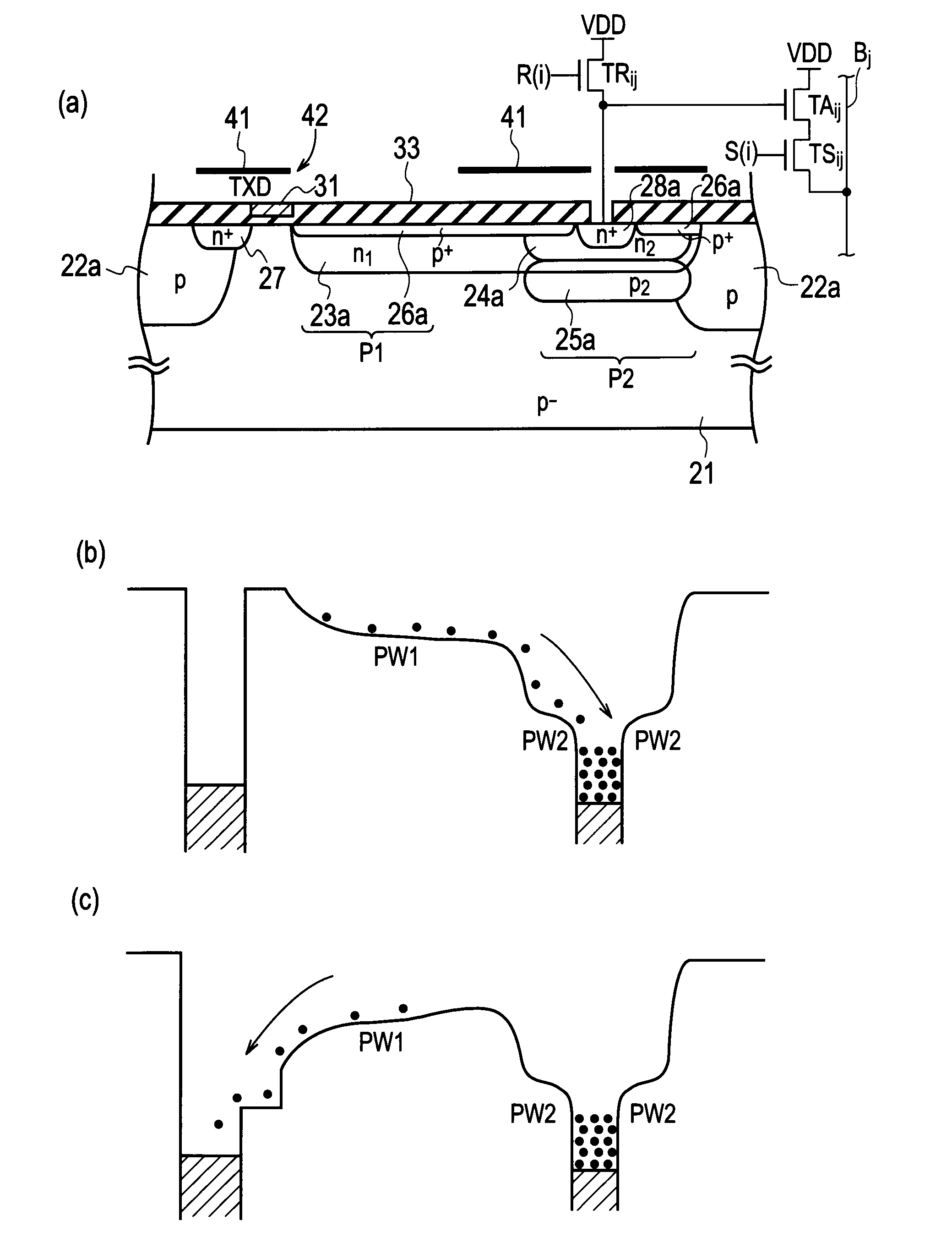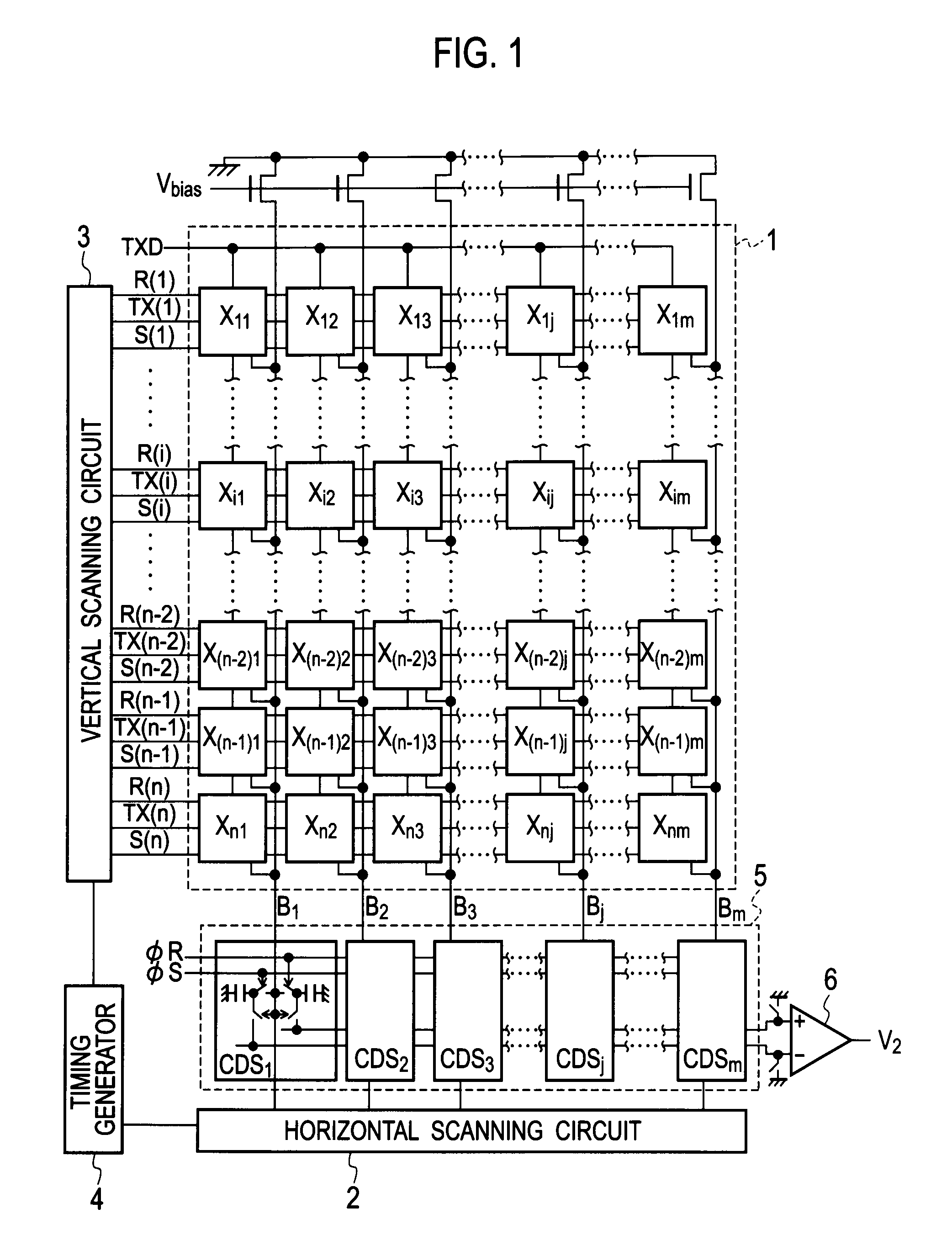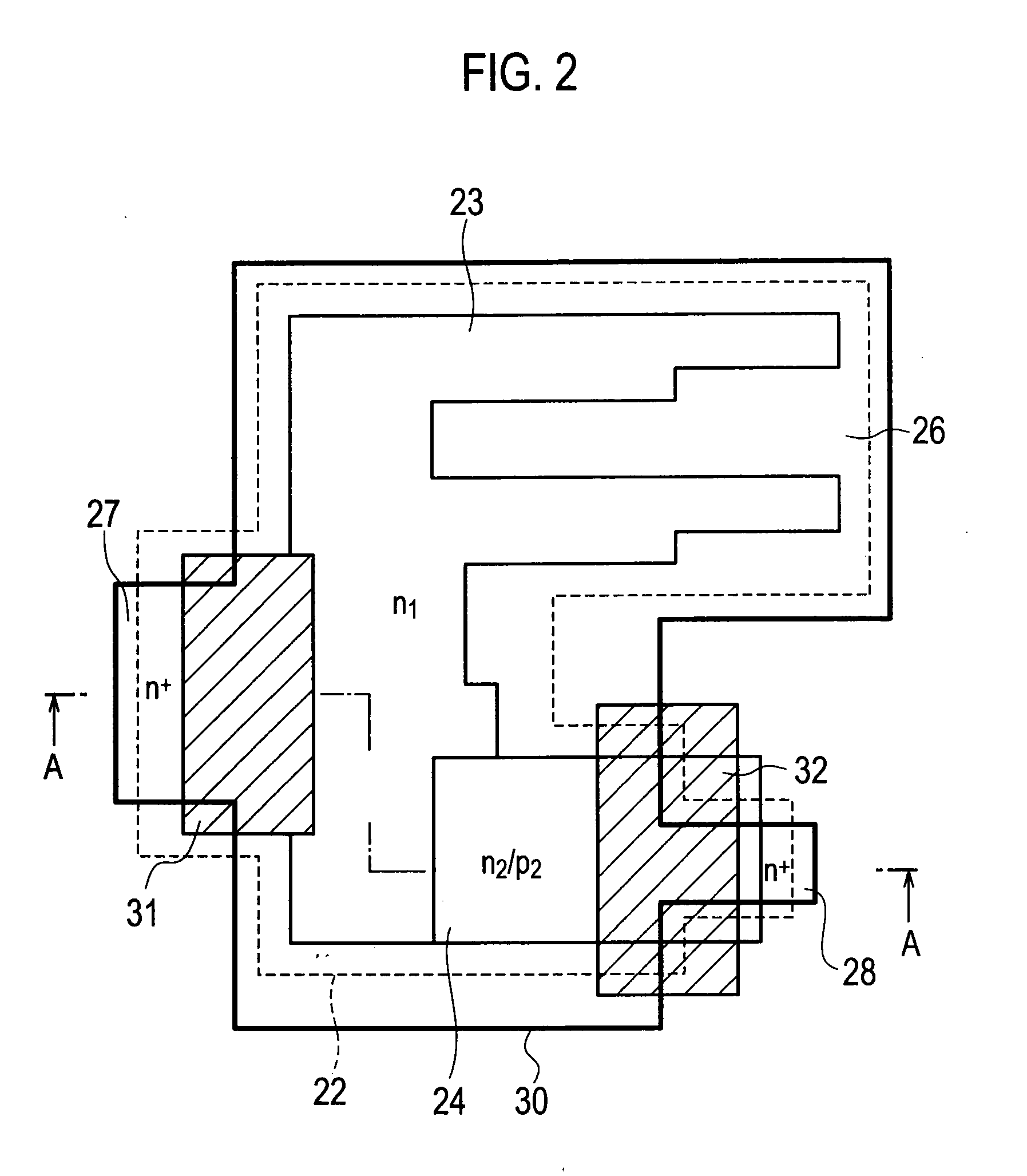Semiconductor element and solid-state imaging device
a solid-state imaging and semiconductor technology, applied in the direction of radio frequency controlled devices, instruments, television systems, etc., can solve the problems of complex structure of conventional image sensors that use lock-in pixels, and also generate transfer delay problems, etc., to achieve good transfer efficiency of charges, simple structure of pixels, and high resolution
- Summary
- Abstract
- Description
- Claims
- Application Information
AI Technical Summary
Benefits of technology
Problems solved by technology
Method used
Image
Examples
first embodiment
[0033]In a solid-state imaging device (two-dimensional image sensor) pertaining to a first embodiment of the present invention, as illustrated in FIG. 1, a pixel array 1 and peripheral circuits (2, 3, 4, 5 and 6) are integrated on a same semiconductor chip. In the pixel array 1, a large number of pixels Xij (i=1 to m; j=1 to n: where m, n are integers, respectively) are arrayed in a shape of a two-dimensional matrix, and for example, a rectangular imaging region is established. On the lower side of the pixel array 1, a horizontal scanning circuit 2 is provided along pixel rows X11 to X1m; - - - ; Xi1 to Xim; - - - ; X(n-2)1 to X(n-2)m; X(n-1)1 to X(n-1)m; and Xn1 to Xnm directions. On the left side of the pixel array, a vertical scanning circuit 3 is provided along pixel columns X11, - - - , Xi1, - - - , X(n-2)1, X(n-1)1, Xn1; X12, - - - , Xi2, - - - ; X(n-2)2, X(n-1)2, Xn2; X13, - - - , Xi3, - - - ; X(n-2)3, X(n-1)3, Xn3; - - - ; X1j, - - - , Xij, - - - , X(n-2)j, X(n-1)j, Xnj; - -...
second embodiment
[0077]In the pixel in the solid-state imaging device pertaining to the first embodiment, by controlling the potential of the read-out gate electrode 32, charges accumulated in the accumulation region 24 are transferred to the read-out region 28. However, as illustrated in a plan view in FIG. 8, by designing a semiconductor element serving as a part of the pixel Xij in the solid-state imaging device such that the read-out region 28a is allocated in the inside of a buried region 23a, and furthermore in the inside of an accumulation region 24a, without providing the read-out gate electrode, charges accumulated in the accumulation region 24a can be directly transferred to the read-out region 28.
[0078]As FIG. 9 (a) illustrates a step-formed cross-sectional view taken from B-B direction in FIG. 8, the pixel (semiconductor element) in a solid-state imaging device pertaining to a second embodiment of the present invention encompasses a semiconductor region 21 of the first conductivity type ...
third embodiment
[0087]Also, as illustrated in FIGS. 8 and 9, the already-described second embodiment has represented a structure such that the read-out region 28a is located at the vicinity of the center in the surface of the accumulation region 24a, the block layer 25a of the first conductivity type (p+-type), which is higher in impurity concentration than the semiconductor region 21, is provided below the accumulation region 24a, and without any read-out gate electrode, charges accumulated in the accumulation region 24 are directly transferred to the read-out region 28. However, in a semiconductor element serving as a part of the pixel Xij in a solid-state imaging device pertaining to a third embodiment of the present invention, as illustrated in FIG. 11, a layout is employed such that the areas of the accumulation region 24a and the block layer 25a which have been used in the second embodiment are removed, and a well region (p-well) 22b overlaps with a read-out region 28b. In the plan view in FI...
PUM
 Login to View More
Login to View More Abstract
Description
Claims
Application Information
 Login to View More
Login to View More - R&D
- Intellectual Property
- Life Sciences
- Materials
- Tech Scout
- Unparalleled Data Quality
- Higher Quality Content
- 60% Fewer Hallucinations
Browse by: Latest US Patents, China's latest patents, Technical Efficacy Thesaurus, Application Domain, Technology Topic, Popular Technical Reports.
© 2025 PatSnap. All rights reserved.Legal|Privacy policy|Modern Slavery Act Transparency Statement|Sitemap|About US| Contact US: help@patsnap.com



